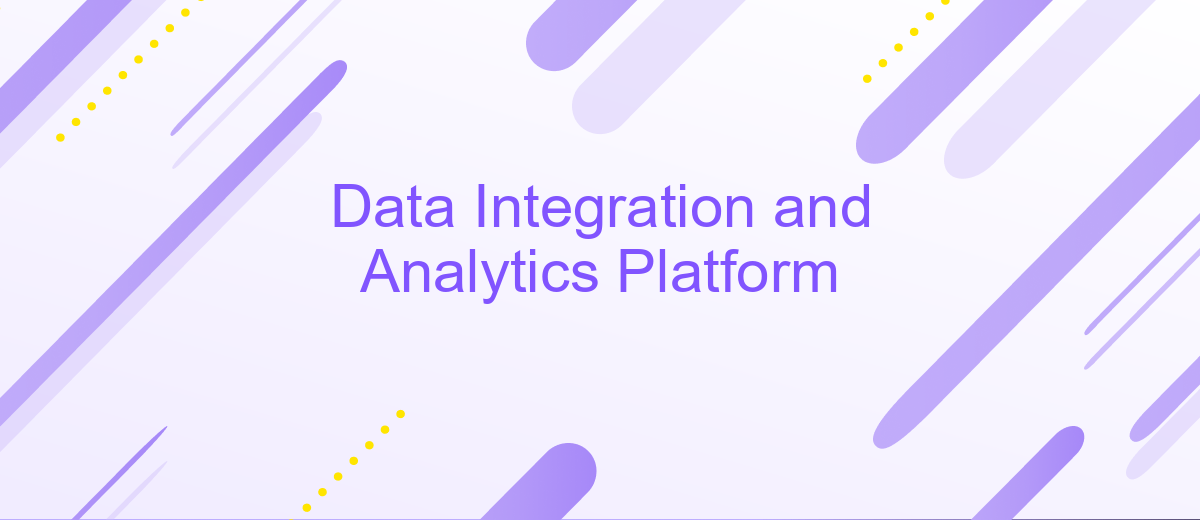Data Integration and Analytics Platform
In today's data-driven world, businesses are inundated with vast amounts of information from diverse sources. A robust Data Integration and Analytics Platform is essential for consolidating, analyzing, and deriving actionable insights from this data. This article explores the key features, benefits, and implementation strategies of such platforms, and how they can drive informed decision-making and operational efficiency in modern enterprises.
Data Integration Capabilities
Data integration capabilities are essential for any robust analytics platform, enabling seamless data flow from various sources into a unified system. Effective data integration ensures that data is accurate, consistent, and readily available for analysis, driving better decision-making and operational efficiency.
- Automated data extraction from multiple sources
- Real-time data synchronization
- Data transformation and normalization
- Scalable data storage solutions
- Seamless integration with third-party tools
One notable service that facilitates these capabilities is ApiX-Drive. This platform allows users to automate data transfers between different systems without needing extensive technical skills. By leveraging ApiX-Drive, organizations can streamline their data integration processes, ensuring that all data is up-to-date and easily accessible for analytics. This leads to more accurate insights and improved business outcomes.
Analytics Platform Features

An effective analytics platform must offer a comprehensive suite of features designed to streamline data integration and provide actionable insights. One key feature is the ability to connect to various data sources seamlessly. Platforms like ApiX-Drive excel in this area by offering easy-to-use tools for integrating disparate data systems, ensuring that all relevant data is accessible in one place. This not only saves time but also reduces the risk of errors and inconsistencies in the data, enabling more accurate analysis.
Another essential feature is advanced data visualization capabilities. These tools allow users to create intuitive and interactive dashboards that can display complex data in a more understandable format. Additionally, robust analytics platforms should offer real-time data processing and predictive analytics to help organizations make proactive decisions. Customizable reporting and automated alerts are also crucial, ensuring that stakeholders are always informed about key metrics and trends. Together, these features empower businesses to harness the full potential of their data, driving better decision-making and strategic planning.
Benefits of Data Integration and Analytics

Data integration and analytics platforms offer a multitude of benefits that can significantly enhance business operations and decision-making processes. By consolidating data from various sources, organizations can gain a comprehensive view of their operations, leading to more informed and strategic decisions.
- Improved Data Quality: Integrating data from multiple sources ensures consistency and accuracy, reducing errors and redundancies.
- Enhanced Decision-Making: Access to real-time, unified data enables quicker and more accurate business decisions.
- Cost Efficiency: Streamlined data management processes reduce operational costs and save time.
- Scalability: Platforms like ApiX-Drive facilitate seamless integration and scaling as business needs grow.
- Increased Productivity: Automation of data workflows frees up valuable time for employees to focus on core tasks.
Utilizing platforms such as ApiX-Drive can simplify the integration process by providing user-friendly tools for connecting various data sources. This not only accelerates the setup but also ensures that data flows smoothly between systems, maximizing the potential of your data assets.
Architecture and Design Considerations

When designing a Data Integration and Analytics Platform, it is crucial to consider both the architecture and the design elements that will ensure scalability, reliability, and efficiency. The architecture should be modular to facilitate easy updates and maintenance without disrupting the entire system. Additionally, the design should support real-time data processing to provide timely insights.
One of the key considerations is the selection of integration tools and services. For instance, ApiX-Drive is an effective tool that can simplify the integration process by connecting various data sources seamlessly. This service can automate data flow between systems, reducing manual intervention and minimizing errors.
- Modularity for easy updates and maintenance
- Support for real-time data processing
- Utilization of integration tools like ApiX-Drive
- Scalability to handle growing data volumes
- Robust security measures to protect data integrity
By focusing on these architecture and design considerations, organizations can build a Data Integration and Analytics Platform that not only meets current needs but is also adaptable for future growth and technological advancements. This ensures a robust and efficient system capable of delivering actionable insights.


Case Studies and Implementation Strategies
One notable case study involves a global retail company that significantly improved its operational efficiency by implementing a comprehensive data integration and analytics platform. By leveraging ApiX-Drive, the company seamlessly integrated disparate data sources, including CRM, ERP, and marketing automation systems. This integration enabled real-time data synchronization, providing a unified view of customer interactions and business processes. As a result, the company achieved enhanced decision-making capabilities and a 20% increase in customer satisfaction.
For successful implementation, it is crucial to adopt a phased approach. Start with a thorough assessment of existing data systems and identify key integration points. Next, utilize robust tools like ApiX-Drive to automate data flows between various platforms. Ensure continuous monitoring and optimization to address any integration challenges promptly. Additionally, involve stakeholders from different departments to ensure the platform meets diverse business needs. By following these strategies, organizations can unlock the full potential of their data integration and analytics initiatives, driving growth and innovation.
FAQ
What is a Data Integration and Analytics Platform?
How does data integration work?
What are the benefits of using a Data Integration and Analytics Platform?
How can I automate data integration processes?
What should I consider when choosing a Data Integration and Analytics Platform?
Apix-Drive is a universal tool that will quickly streamline any workflow, freeing you from routine and possible financial losses. Try ApiX-Drive in action and see how useful it is for you personally. In the meantime, when you are setting up connections between systems, think about where you are investing your free time, because now you will have much more of it.

